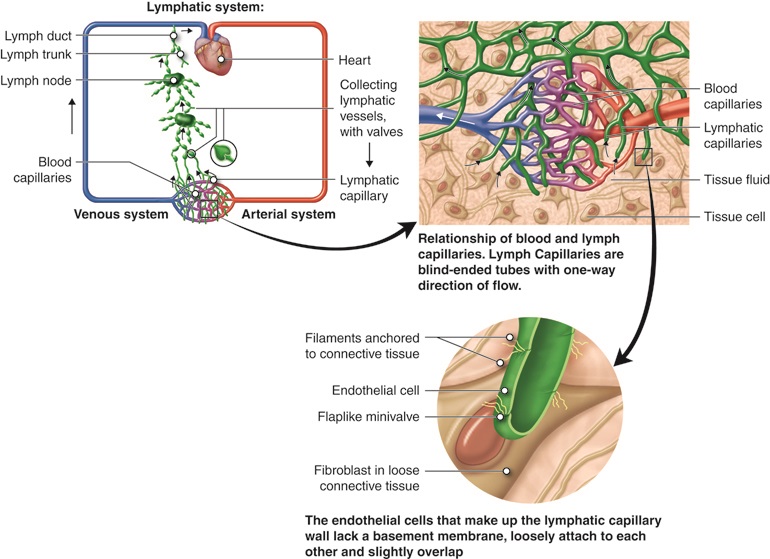
nid: 62601
Additional formats:
None available
Description:
Relationship of blood capillaries and lymphatic capillaries. Lymphatic capillaries unite to form larger lymphatic vessels. Structurally, lymphatic vessels are similar to veins because they also have one way valves that function like gates to ensure the lymph only flows in one direction. Like veins, skeletal muscle contraction exerts pressure on the lymph vessels and forces the lymph forward through them. Lymph vessels are like one-way roads, with the lymph being collected at the capillary beds and travels through the body into the thoracic cavity. Lymph is deposited in one of two large ducts in the chest region: the right lymphatic duct and the thoracic duct. The lymph then travels from these ducts into venous circulation via the subclavian and jugular veins. English labels.
Image and description retrieved from Anatomy & Physiology by Open Learning Initiative (CC BY-NC-SA).
Image and description retrieved from Anatomy & Physiology by Open Learning Initiative (CC BY-NC-SA).
Anatomical structures in item:
Uploaded by: rva
Netherlands, Leiden – Leiden University Medical Center, Leiden University
Ductus lymphaticus dexter
Vas lymphaticum
Trunci et ductus lymphatici
Plexus lymphaticus
Vas lymphocapillare
Lymphonodus
Vas capillare
Creator(s)/credit: Open Learning Initiative
Requirements for usage
You are free to use this item if you follow the requirements of the license:  View license
View license
 View license
View license If you use this item you should credit it as follows:
- For usage in print - copy and paste the line below:
- For digital usage (e.g. in PowerPoint, Impress, Word, Writer) - copy and paste the line below (optionally add the license icon):
"OLI - Drawing Relationship of blood capillaries and lymphatic capillaries - English labels" at AnatomyTOOL.org by Open Learning Initiative, license: Creative Commons Attribution-NonCommercial-ShareAlike




Comments